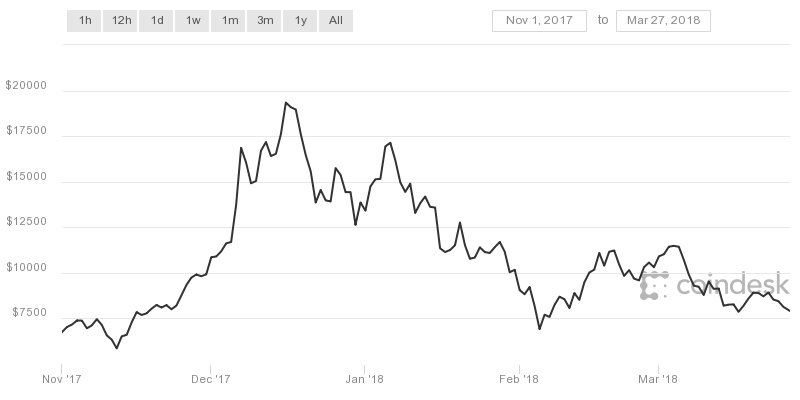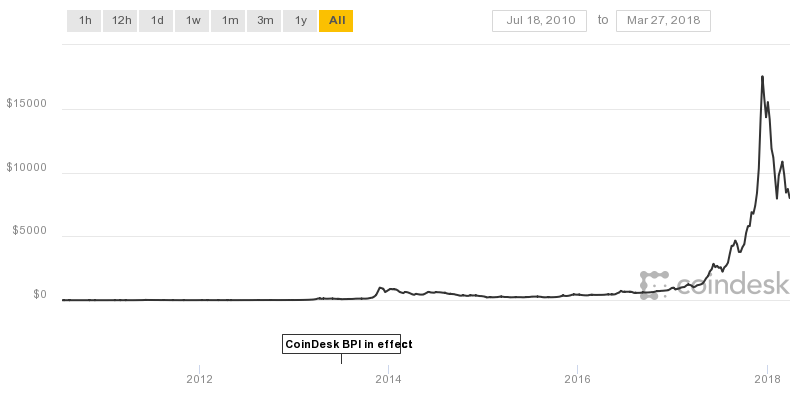Debates and Contemporary Issues
By: David Brown
Introduction
Since money remains relevant for the foreseeable future, we would be remiss if we didn’t leave you with some relevant examples of how fiat money can inform your decision making in money matters. After all, it is about knowledge in the end.

Before we get into some of the contemporary issues and debates related to fiat money, it is a good time to review some of our knowledge. That is, our working definitions and understandings around the concept of money (and fiat money, in particular). It is our hope that in doing so, you won’t be completely lost when we break into the case examples.
Outline
In this blog post, we will explore debates around fiat money in three scenarios, from the past, present, and future. Each scenario explores alternatives to fiat money, thus containing individual rationales for the supposed benefits of moving away from a system of fiat money. Brief summaries of the three scenarios follow:
Throughout United States history, debates surrounding the “gold standard” have dominated public discussion. The United States has changed its position on the issue several times. The pervasiveness of this issue still exists today and thus deserves a closer look.
Modern debates about cryptocurrencies, Bitcoin in particular, are as intense and passionate as they are detached from reality. In this post, we identify how cryptocurrencies are a ponzi scheme based upon how they utilize fiat money.
The final scenario this post will explore is in the future. Full disclosure: we cannot see into the future. If we could, we would have already taken our expertise to the New York Stock Exchange (we promise). Instead, we will turn to the fiction Ready Player One. The novel’s setting is in the future and details an economy that is wholly dependent on virtual reality systems. Hence, traditional currencies like the dollar and euro have been replaced by a virtual currency that can be used to purchase goods & services.
Review
Money and currency are not the same. Money is currency in its most viable form; most people will accept money as a mode of payment. There are three distinguishing characteristics of money:
- Medium of exchange
- Store of value
- Unit of account.
For a currency to be sufficiently classified as a “viable” currency, it is necessary for it to be characterized by all three features. Several forms of viable currencies do exist, but there is one in particular that draws our attention today:
- Fiat money is paper money that cannot be converted or swapped for its equivalent value in precious metals. It is made legal tender by the government. This means, in short, that a creditor must accept the paper money as a payment of debts (Ernst 1973).
Past
We hear it now as they heard it then: BUY GOLD. Goldtooths have always defended purchasing this precious metal as a security. Proponents have regurgitated similar arguments throughout history. They claim it will defend your wealth against evil inflation. They hail the metal for its scarcity. Ultimately, they claim that you can trust in gold.
These arguments are powerful, in part, because they are romantic. They invoke an imaginary history in which gold and paper currency (fiat money) never interacted. This is a fiction that belies the history of money and the rivers of ink that have already been spilled on the subject. John Locke, for instance, believed that precious metals were the only variable that could account for value in money.
Speaking on the subject of silver, Locke declared that Silver “is the instrument of Commerce by its intrinsic value” (Locke, Kelly 1991).
The composition of money during this time in England was, in fact, a blend of metals. The significance of this fact is that all monetary developments can be understood as either evolution or revolution from this form. Furthermore, Locke’s understanding of money is antiquated from our perspective because it is an anachronism. It is not with the times. For Locke and many of his contemporaries, paper money was only valuable because it could be swapped for its equivalent value in precious metals. Hence, Locke is probably rolling in his grave because modern financial systems rejected this notion in favor of fiat money.
Still, abound are Lockean ideas about the primacy of precious metals in money matters. Consider why it is that we still hear about the need to “invest” in gold.
Well, in one real sense, people are driven by the argument without considering its implications. But instead of listening to me explain to you why your fiat money is more reliable in investments thang gold, hear it from a billionaire. That’s right, Warren Buffett, the financial wizard associated with Berkshire Hathaway, has derided the notion that gold is a secure investment against inflation:
“The problem with commodities is that you are betting on what someone else would pay for them in six months. The commodity itself isn’t going to do anything for you….it is an entirely different game to buy a lump of something and hope that somebody else pays you more for that lump two years from now than it is to buy something that you expect to produce income for you over time” (Commodity HQ 2012).
Ideas about money have come a long way since Locke.
Present
Cryptocurrency enthusiasts will inform you about how cryptocurrency’s value derives itself first and foremost from “blockchain technology.” While blockchain technology deserves a separate treatment altogether, it cannot and should not be considered a means to value. Blockchain technology is an end in itself and will disrupt traditional markets. However, the money market will remain in tact.
The quintessential case study for cryptocurrencies is Bitcoin. It has dominated public discussions and major media outlets. Below is a 6 month valuation for BTC from Coindesk.

While it might appear initially to look as if there is just a lot of volatility in the market, there is more to the story. Indeed, let’s compare the past six months with the YTD graph of Bitcoin.

This graph should immediately strike you as odd, different, and/or concerning. Its exponential growth and bust in such a short time-span implies that there were winners and losers in this scenario. What is it about Bitcoin, in relation to the standard, preeminent currencies, that makes it so valuable? Well, the crypto enthusiasts will flood you with ideas about blockchain technology, but these arguments are divorced from money matters.
Instead, the reality is that “bitcoin and its imitators are a zero-sum game in which the sum of all fiat currency paid for it is the sum of all fiat currency received for it, excluding mining costs.” In other words, the real value of Bitcoin is actually calculated by taking the quantity of money paid for BTC and subtracting the ‘mining costs’. So why would anyone want to trade in there currency of value for a virtual coin whose real value is less than the nominal value paid for it?
The answer to this question lies in individual misunderstandings about money. In particular though, those who purchase Bitcoin are largely attracted by the idea of getting rich quick. Many have FOMO, or the “Fear of Missing Out”. Abound are historical examples of this so-called “FOMO.” There are, indeed, many examples beyond the cryptocurrency craze that is currently sweeping the nation.
Some readers may recall the Beanie Babie fad that was en vogue during the 90s. One blogger criticizes Bitcoin by comparing it to other commodites: “Just like gold, tulip bulbs, Beanie Babies, 1999 dotcoms without any hope of a product plan, “pre-construction pricing” Toronto condominiums you have no intent to occupy or rent out, and rare baseball cards are not investments (Mr. Money Mustache 2018).” In other words, this is not the first time we have seen rampant speculation on alternatives to traditional fiat money.
What follows then is the ugly truth: “The earlier participants are now cashing out the billions that newcomers are putting into this distributed Ponzi scheme” (Webb 2017).
Future
In the book Ready Player One, the year is 2045 and the environment is depleted, the planet is overpopulated, and resources are scarcer than ever. Simultaneously, virtual reality dominates the global economy. The company Gregarious Simulation Systems owns the rights to the virtual software OASIS where the majority of goods&services are exchanged. These goods&services can be ordered with virtual credits that are purchased with traditional national currencies.
“Items in the OASIS had just as much value as things in the real world (sometimes more), and you couldn’t pay for them with food vouchers. The OASIS credit was the coin of the realm, and in these dark times, it was also one of the world’s most stable currencies, valued higher than the dollar, pound, euro, or yen” (27, Ernest Cline 2011).
Interestingly, businesses accepted the virtual credits as legal tender. This allowed the OASIS creator GSS to make plenty of profit:
“Any business that wanted to set up shop inside the OASIS had to rent or purchase virtual real estate… In addition to the billions of dollars that GSS raked in selling land that didn’t actually exist, they made a killing selling virtual objects” (ibid).
While this work of fiction offers an interesting hypothetical virtual currency that, for all intents and purposes, claims to be superior to traditional currencies, we cannot just go around believing everything we read. It has already been established in our earlier analysis with cryptocurrencies that paying for virtual currency with fiat money gives it a real value equivalent to the inputted fiat currency. The same principle extends to the unregulated virtual currency of the OASIS.
References
Commodity HQ. “Top 7 Warren Buffett Quotes on Gold Investing.” Minyanville, October 3, 2012. http://www.minyanville.com/trading-and-investing/commodities/articles/Warren-Buffett-brka-gold-investing-investing/10/3/2012/id/44617.
David Webb. “Bitcoin: The World’s First Decentralised Ponzi Scheme.” Webb-site Reports, December 14, 2017. https://webb-site.com/articles/bitcoinponzi.asp.
Ernest Cline. Ready Player One. Broadway Books, 2011.
Ernst, Joseph Albert. Money and Politics in America, 1755-1775: A Study in the Currency Act of 1764 and the Political Economy of Revolution. Chapel Hill: Published for the Institute of Early American History and Culture, by the University of North Carolina Press, 1973.
LaVito, Angelica. “John McAfee Challenges Jamie Dimon Bitcoin Skepticism,” September 13, 2017. https://www.cnbc.com/2017/09/13/john-mcafee-challenges-jamie-dimon-bitcoin-skepticism.html.
Locke, John, P. H. Kelly, and John Locke. Locke on Money. The Clarendon Edition of the Works of John Locke. Oxford [England] : New York: Clarendon Press ; Oxford University Press, 1991.
“Why Bitcoin Is Stupid.” Mr. Money Mustache, January 3, 2018. http://www.mrmoneymustache.com/2018/01/02/why-bitcoin-is-stupid/.